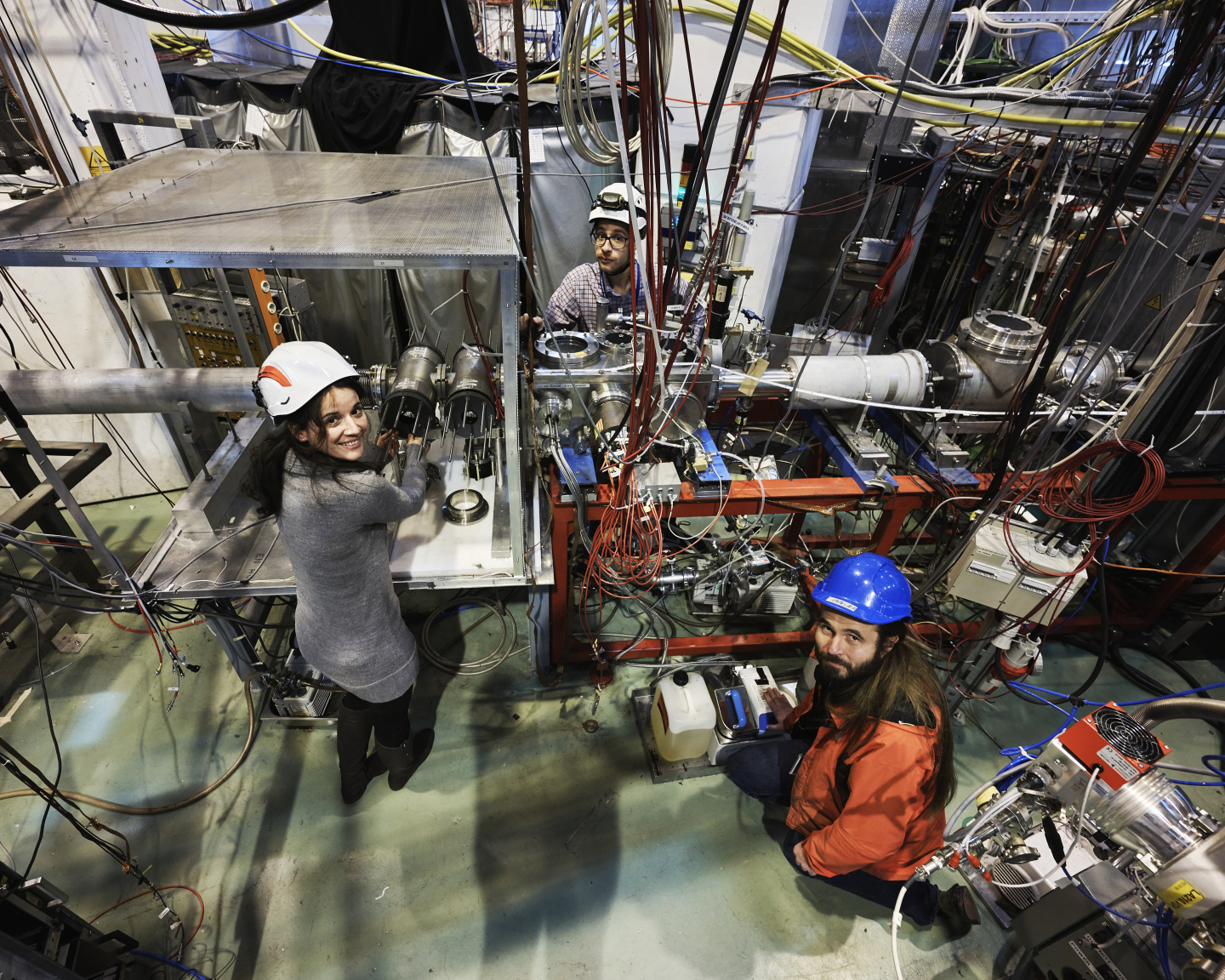Experiments at CERN and the Accelerator Laboratory in Jyväskylä, Finland, have revealed that the radius of an exotic nucleus of aluminium, 26mAl, is much larger than previously thought. The result, described in a paper just published in Physical Review Letters, sheds light on the effects of the weak force on quarks – the elementary particles that make up protons, neutrons and other composite particles.
Among the four known fundamental forces of nature – the electromagnetic force, the strong force, the weak force and gravity – the weak force can, with a certain probability, change the “flavour” of a quark. The Standard Model of particle physics, which describes all particles and their interactions with one another, does not predict the value of this probability, but, for a given quark flavour, does predict the sum of all possible probabilities to be exactly 1. Therefore, the probability sum offers a way to test the Standard Model and search for new physics: if the probability sum is found to be different from 1, it would imply new physics beyond the Standard Model.
Interestingly, the probability sum involving the up quark is presently in apparent tension with the expected unity, although the strength of the tension depends on the underlying theoretical calculations. This sum includes the respective probabilities of the down quark, the strange quark and the bottom quark transforming into the up quark.
The first of these probabilities manifests itself in the beta decay of an atomic nucleus, in which a neutron (made of one up quark and two down quarks) changes into a proton (composed of two up quarks and one down quark) or vice versa. However, due to the complex structure of the atomic nuclei that undergo beta decays, an exact determination of this probability is generally not feasible. Researchers thus turn to a subset of beta decays that are less sensitive to the effects of nuclear structure to determine the probability. Among the several quantities that are needed to characterise such “superallowed” beta decays is the (charge) radius of the decaying nucleus.
This is where the new result for the radius of the 26mAl nucleus, which undergoes a superallowed beta decay, comes in. The result was obtained by measuring the response of the 26mAl nucleus to laser light in experiments conducted at CERN’s ISOLDE facility and the Accelerator Laboratory’s IGISOL facility. The new radius, a weighted average of the ISOLDE and IGISOL datasets, is much larger than predicted, and the upshot is a weakening of the current apparent tension in the probability sum involving the up quark.
“Charge radii of other nuclei that undergo superallowed beta decays have been measured previously at ISOLDE and other facilities, and efforts are under way to determine the radius of 54Co at IGISOL,” explains ISOLDE physicist and lead author of the paper, Peter Plattner. “But 26mAl is a rather unique case as, although it is the most precisely studied of such nuclei, its radius has remained unknown until now, and, as it turns out, it is much larger than assumed in the calculation of the probability of the down quark transforming into the up quark.”
“Searches for new physics beyond the Standard Model, including those based on the probabilities of quarks changing flavour, are often a high-precision game,” says CERN theorist Andreas Juttner. “This result underlines the importance of scrutinising all relevant experimental and theoretical results in every possible way.”
Past and present particle physics experiments worldwide, including the LHCb experiment at the Large Hadron Collider, have contributed, and are continuing to contribute, significantly to our knowledge of the effects of the weak force on quarks through the determination of various probabilities of a quark flavour change. However, nuclear physics experiments on superallowed beta decays currently offer the best way to determine the probability of the down quark transforming into the up quark, and this may well remain the case for the foreseeable future.

